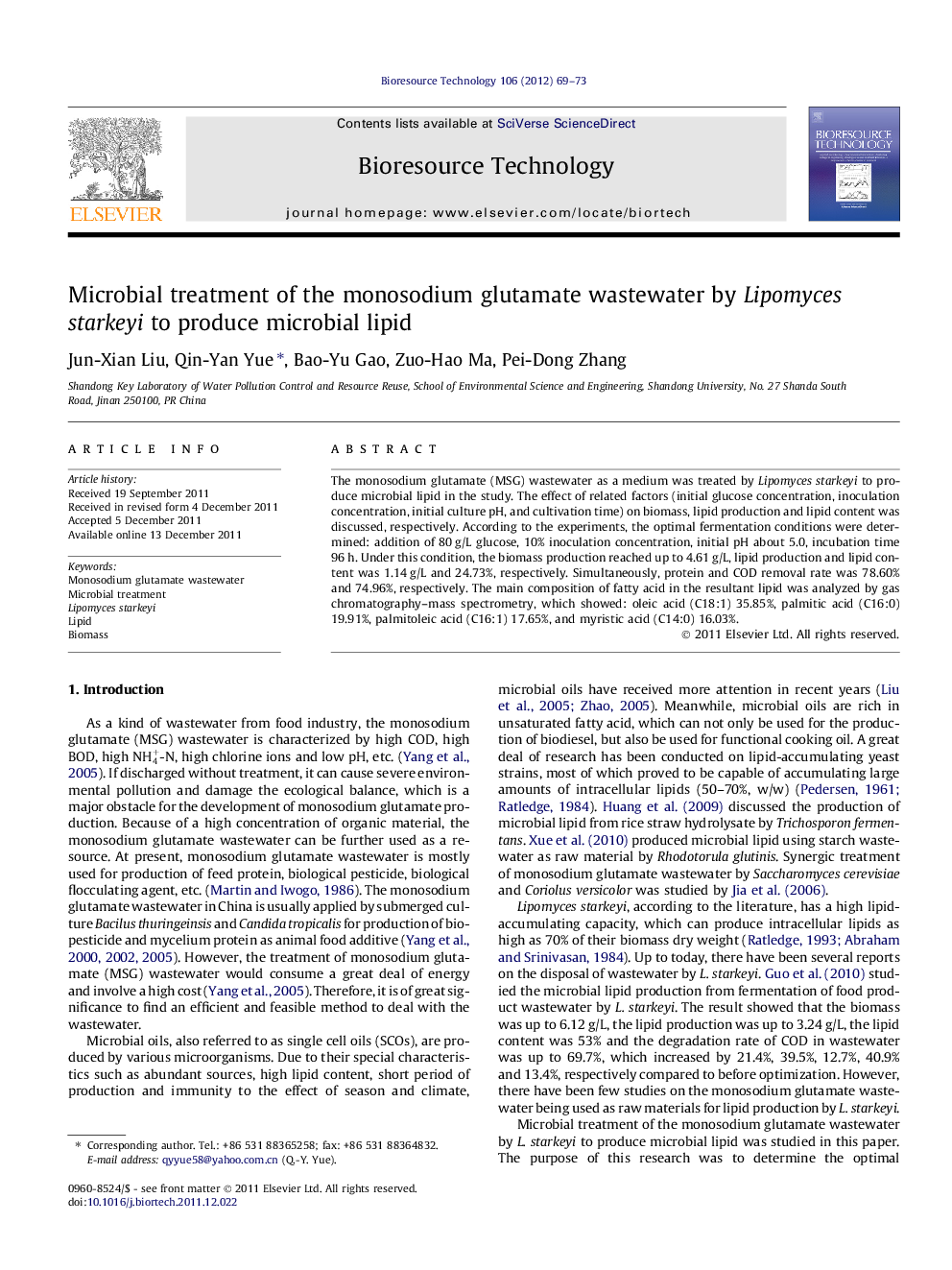| Article ID | Journal | Published Year | Pages | File Type |
|---|---|---|---|---|
| 681664 | Bioresource Technology | 2012 | 5 Pages |
The monosodium glutamate (MSG) wastewater as a medium was treated by Lipomyces starkeyi to produce microbial lipid in the study. The effect of related factors (initial glucose concentration, inoculation concentration, initial culture pH, and cultivation time) on biomass, lipid production and lipid content was discussed, respectively. According to the experiments, the optimal fermentation conditions were determined: addition of 80 g/L glucose, 10% inoculation concentration, initial pH about 5.0, incubation time 96 h. Under this condition, the biomass production reached up to 4.61 g/L, lipid production and lipid content was 1.14 g/L and 24.73%, respectively. Simultaneously, protein and COD removal rate was 78.60% and 74.96%, respectively. The main composition of fatty acid in the resultant lipid was analyzed by gas chromatography–mass spectrometry, which showed: oleic acid (C18:1) 35.85%, palmitic acid (C16:0) 19.91%, palmitoleic acid (C16:1) 17.65%, and myristic acid (C14:0) 16.03%.
► Microbial treatment of the monosodium glutamate wastewater. ► The strain is Lipomyces starkeyi which is an oleaginous microorganism. ► Ascertain the optimum conditions for production of microbial lipid in the wastewater.
